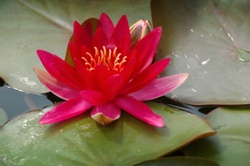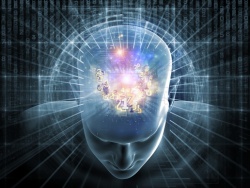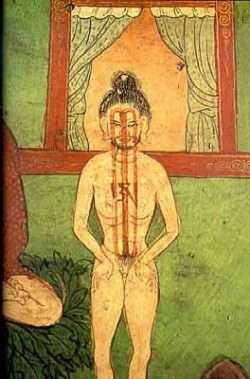About Gelug Prasangika and Shentong view
Dear Ven. Ngawang Nyima,
Thank you very much for wish to help me to understand the Prasangika…
…excuse me my questions are from Kagyu tradition perspective, whom I’m familiar with, so maybe they could be a little strange. I'd like to understand Gelug Prasangika from the Lamrim perspective.
The Kagyu explanation is very clear for me because I could easy connect it with the topic of Lamrim about Vajrayana theory. I still don't know how one could do it using Prasangika also, so I prepared questions:
- Does Gelug Prasangika assert only that the true nature of reality transcends all conceptual fabrications, but not saying what this reality is? How such view could support practices like Vajrayana, where many concepts about the clear light or Buddha Nature are very important?
- Is Prasangika the basis for Vajrayana teachings in Gelug tradition? In Kagyu Vajrayana is explained according to Shentong view, how it is in Gelug?
- How Gelug tradition negates Shentong view?
What arguments are used? Is Shentong view the same as Chittamatra according to Gelug?
- Does Gelug tradition distinguish between self-aware and self-illuminating consciousness of Chittamatra view and self-illuminating and self-aware awareness which is beyond conceptual fabrications that one can find in Vajrayana teaching or in Shentong view? How one can negate the existence of this non-conceptual awareness?
- According to what system Gelug explains the process of transformation the mind?
According to Chittamatra/Shentong there are 8 types of consciousness that transform into 5 wisdoms of Buddha.
How it is from Gelug Prasangika view?
‘Concept of the Ultimate Reality According to Different Schools’
- by Abbot Khen Rinpoche Acharya Geshe Lobsang Palden, Sera Jey Monastery,
Answer to Q. No. 1
According to Gelug Lamrim tradition the Madhyamaka Prasangika philosophy and practice are: all things and events exist only in conventionally and relatively. They lack intrinsic entity.
They exist merely as we posit and designate certain identity.
So they exist only in name and appearance but devoid of any intrinsic existence. There are two principles: the objective and the subjective.
What is viewed wrongly is the object of negation.
Therefore the notion of appearance as be real is also object of negation. So there are two sides of it. However, the ultimate object of negation is the later one. Thus maintained in the scriptural texts.
Nagarjuna said in the Madhymaka Mulaprja (Tsa-she), “ Dei Phyir rTen abyun ma yin pi, chos aga yod m yin no, dei Phyir sTongpa myin pi, Chos aga yod p mayin no” (therefore there is no phenomenon which is not dependently originated. As such there is no phenomenon which is not empty of its intrinsic entity).
Thus said in the madhyamakavatar, “ bden pa gnyis su ang rang shin med pai Phyir” (even the two truths are devoid of intrinsic values).
Even according to Bodhipathpradipam (by Atisha) which is the basis of Lamrim tradition, “ Chos rNams Thams chad sKye med pi, rang shin medpa nges byas nas, rNam Par rTogs Med sGomspar Bya”, (All phenomenal things and events are unborn; establishing the fact that they lack intrinsic, independent existence, thus one should meditate on non-conceptual thought). This is just a clue to this philosophical point of view.
If you wish to go into depth of this viewpoint in detail, you should study the philosophical works by Nagarjuna, Arya Deva, Buddhapalita, Chandrakirti, and that of Je Rinpoche’s.
The main Madhyamaka viewpoint is: based on the principle that all phenomenal things and events do not exist as independent entity, meditation on two truths and six perfections and four objects of meritorious accumulations (Dana, guidance, praise) - practicing on these will eventually lead to attainment of the ultimate experiential knowledge of emptiness. And this is the viewpoint of Madhyamaka Prasangika.
Answer to Q. No.2
Transcending all conceptual thoughts regarded as the ultimate viewpoint of Madhyamaka Prasangika as understood in Gelug tradition, if that refers to cessation of all self grasping views, than, it is so.
However, if it refers to all kinds of conceptual thoughts irrespective of whether they are correct views or wrong views, than it will have the danger of falling into the same mistaken viewpoint held by the Chinese Hashang, according to whom, all kinds of conceptual thoughts are regarded as the object of negation.
If that is so, the problem will arise as to how one can establish the principle of conventional truth.
If that being accepted, it will run contrary to what is said in the Madhyamakavatara, “kun rZob bden pa thabs Su gyur o dang, don dam bdenpa thabs Su gyur p sTe”, (conventional truth is the means; whereas the transcendental truth is the object of realization).
So here conventional truth has been regarded as the means to understand and realize the transcendental truth.
To sum up, Prasangika viewpoint or ultimate reality of the phenomena is: based on authenticated viewpoint of conventionally truth simultaneously negating the independent intrinsic existence or emptiness is accepted as the ultimate reality of the phenomena.
Answer to Q. No.3
Madhyamaka’s viewpoint of going beyond or transcending all conceptual thoughts is, extremely relevant during the course of practicing Vajarayana. This practice comprised of generating stage and completion stage.
Although generating stage is said to be meditated based on Chittamatra viewpoint, during the course of generating stage of the fruition of completion stage, one has to meditate on the experiential experience of the emptiness manifested into mandala and the deities. Therefore, such an experiential knowledge of the emptiness is indispensable.
In the Vajrayana practice, the clear light has two aspects - both subjective and objective.
The objective clear light is in the nature beginingless primordial consciousness which is also the nature of emptiness.
There is this inferential knowledge of the emptiness and the experiential experience of the emptiness.
The first one is identified with that exemplar clear light, the second one identified with the objective clear light.
One, who has experienced the later one, is destined to attain enlightenment.
The Seeds of Buddhahood or the primordial consciousness is extremely important both to the Sutrayana and Vajrayana practice, because it is only by this means and practicing this one is able to lead his path to enlightenment.
Answer to Q. No.4
Generally speaking, Bhawaviveka has said in the Madhyamakahridaya that according to samkhyaki and other non-Buddhists, the Atma and Parmatama are regarded as devoid of any other entity other than their own intrinsic nature, and therefore they accept it as the principle of nirvikalpa or non-duality.
According to Buddhist tradition, for example according to Jonangpa tradition what is become is dependently originated and that which is empty of any designated entity, and which is thus an independent entity has been accepted as Shentong (devoid of otherness).
So although, there are different viewpoints on the acceptance of Shentong, in the Gelug tradition nothing is clearly stated in the scriptural texts on the concept of Shentong, nevertheless, in the suktihridaya (Essence of Wisdom Words), Je Rinpoche says, “des na Chos rNams rang gi mtsan Nyid kyis Grub pai rang shin gyis sTong pa mi adod na rang sTong du ming bTags kyang gShan sTong las mi aDa”
(Thus, if one does not accept all phenomenal things and events as empty of intrinsic entity or independently originated, even if such idea is given the name as self-emptiness, is nothing but empty of otherness or Shentong).
This also points the fact that not only Madhyamaka Prasangika but Sautantrika and the rest also do not accept the concept of Shentong.
This is very clear. According to Prasangika, being devoid of one’s intrinsic entity is regarded as ‘Rangtong’ and all other forms of emptiness are regarded as Shentong. Suktihridaya says, “Chos rNams rang gi mTsan Nyid kyis grub pas sTong p ni rang gi Ngo boss Tong pai don yin la, de las gShan pai sTong tsul rNams rang gi go boss Tong pa min pai”
(When we say that all phenomenal things and events are empty of intrinsic entity this means they are devoid of any self identity. The nature of being emptiness explained other than this way is not really devoid of intrinsic existence), thus declared in it.
How to negate that kind of Shentong and what are the logics put forth?
The logic such as dependent origination proves the non-existence of the self entity and therefore it indirectly negates the idea of Shentong.
According to Gelug tradition all four schools regard each of their own view as the rang-tong, so Chittamatra’s viewpoint is not accepted same as being general viewpoint of Shentong.
Answer to Q. No.5
According to Chittamatra, all phenomenal things and events exist merely as the entity of inner consciousness, is how self realization is attained. The clear light nature of consciousness; Shentong as accepted in Kagyu tradition; clear light consciousness as accepted in Vajrayana; the question that if what is difference between these and the self actualization, and whether a difference is accepted at all, generally speaking, since Prasangika view is the supreme, one has to answer the question based on this - as already mentioned under Answer No. 3 about the clear light consciousness as being the view of Prasangika, if self actualization is to be accepted merely as an entity of inner entity of consciousness, then this consciousness has various levels of subtleties.
Generally speaking, Kagyupa philosophical viewpoint must also comprise of Madhyamaka’s and also that of Chittamatra’s viewpoint to suit individual minds.
To quote from Thau-kan philosophical text, “ lTaba gang dag gSuns pa thams chad dBu mai lTa ba yin pai nges pa mi adug go]]” (All that deals with philosophical viewpoint not necessarily belong to Madhyamaka school of philosophy).
In the ‘ gLu sGrub dGons rGyn’ by Je Tsunpa (rejoinder to Karmapa Mikyod Dorje’s writings), quoting from Karmapa’s own words, “If someone asked what then is the philosophical view of Asanga brothers, it is this that ‘zung-zin nyi-med kyi yeshe’ or pure wisdom that is without a trace of appearance and self grasping that is the end of every all conditioned perception but at the same awareness of ultimate reality, the transcendental truth”.
Going by this principle based on the belief that shen-tong (non-duality?) is the elimination of self grasping and false appearance, and then in this context, the idea of self-realization is no different from this state of realization.
However, according to Vajrayana tradition, certain difference in the level of subtleties have been accepted between the state of self-realization and the clear light nature of the consciousness, as have been earlier explained on the nature of clear light consciousness.
Answer to Q. No.6
The practice of mind training as taught in Gelugpa school is based on the highest philosophical school of thought- Madhyamaka Prasangika. Both the Chittamatra school and school that behold ‘Shen-tong’ accept eight attributes of consciousness.
They believe these eight attributes of consciousness are transformed into the entity of wisdom embodying five aspects.
Contrary to this, Prasangika accepts only five attributes of the consciousness.
And furthermore, they do not even accepts Kun-shi, causal factor, and Nyon-Yid, afflictive emotion, as have been dealt with in detail in the Madhyamakavatara commentary. Although they accept the wisdom with its attributes, which is identified with a clear mirror, it is accepted as being one thing with two different aspects.
Answer to Q. No.7
According to general Gelugpa school of thought, since Prasangika is the highest level of philosophical thoughts, everything has been based on this, for without this sound foundational base, any amount of Vajrayana practices will become effective or bear fruit.
Without this (foundation), how one can visualize the deities that are to be founded on this basis, this being so, the generating stage of meditation practice will not be a correct and flawless one.
If that is so, no one shall be able to do the Vajrayana practices as this is essentially comprised two parts, the generating stage and the completion stage.
The fact that Kagyupa regard the ‘shen-tong chen-mo’ or ‘the great non-duality of Madhyamaka as being at foundation of Vajrayana practice, this in the light of Gelugpa school, may accord well with the Chittamatra school of thoughts, however, basically speaking, it is not so, for the simple logic that Madhyamaka Prasangika is the best and highest level of School of Philosophical thoughts.
N.B. Answers given in above are based on Je Tsongkhapa’s writings. However, while practicing Dharma and doing mediation, the best thing is to do so according to one’s own mental inclination and liking to a particular practice.
This will be more effective and meaningful. The most important thing for a practitioner is to apply one’s own faculty of discrimination power.
Even as Buddha proclaimed:
Like a gold smith testing gold by various methods
By burning, cutting and rubbing
Oh! Bhikshus and learned scholars
You too must test the truth of my words thoroughly
Only after that you should accept it
But not because you respect me
That you accept my words out of reverence
Without judging the words and testing it first.
So you must be the final judge to accept or to reject a point or truth!
Sarva Mangalam! Shubham!
Please note that:
Above answers to the questions are supplied in Tibetan by Most Venerable Khen Rinpoche Acharya Geshe Lobsang Palden of Sera Jey Monastery. Translated into English from Tibetan by Tephun Ttenzin Shastri of Sera Je School.
The chances of errors in this translation are not ruled out owing to inexperience in translating work (english revised by Mariusz Mantur also). In case of confusion original Tibetan version should be referred to for correct meaning. Thank You.







